Contents
This breed of goats was registered not so long ago, but quickly attracted attention. Many goat breeders fall in love with these goats at first sight, while others, on the contrary, generally do not recognize them as a separate breed. At least, goats of the Lamancha breed will definitely not leave anyone indifferent to themselves. What is so attractive about them that for many years sometimes causes heated debates and discussions?
History of the breed
In Spain there is a historical province called La Mancha. On the other hand, it is known that back in the XNUMXth-XNUMXth centuries, Spanish missionaries brought short-eared goats with them to America for breeding both for meat and milk. Goats have spread to many regions of Latin and South America, and also made their way into the United States. They were crossed with many local breeds, but short ears often continued to dominate.
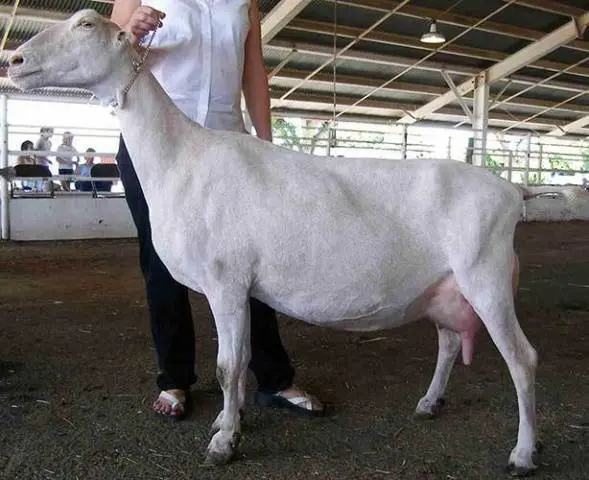
In the middle of the last century, several American breeders from California decided to create a new dairy breed and took short-eared goats as a basis, which were crossed with the most high-yielding representatives of other dairy breeds: Saanen, Nubian, Alpine and others. As a result, in 1958 a separate breed was registered, which received the official name Lamancha.
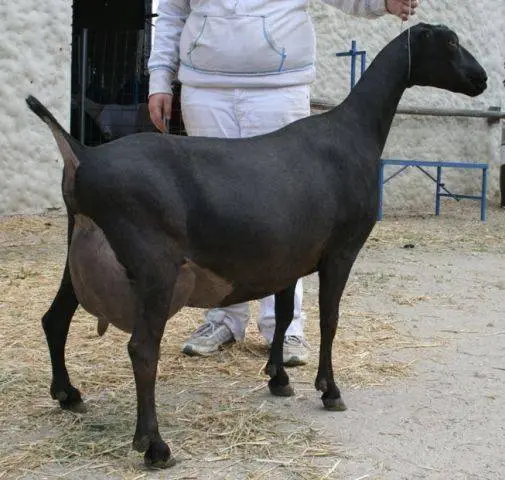
At the same time, short-eared goats continue to exist on the territory of modern Spain and in adjacent regions. There is also an opinion that such goats are most common in the vicinity of a northern latitude of 40 degrees. Indeed, there is documentary evidence of short-eared goats found in Iran, Turkey, Cyprus and Czechoslovakia. Even in our country, they are quite common in Karachay-Cherkessia and in the Rostov region. Moreover, they met there for a long time, and were not imported from America. And it should be noted that almost all owners of short-eared goats note their affectionate nature and the pleasant taste of milk. But by inertia, all short-eared goats are called by one name – lamancha.
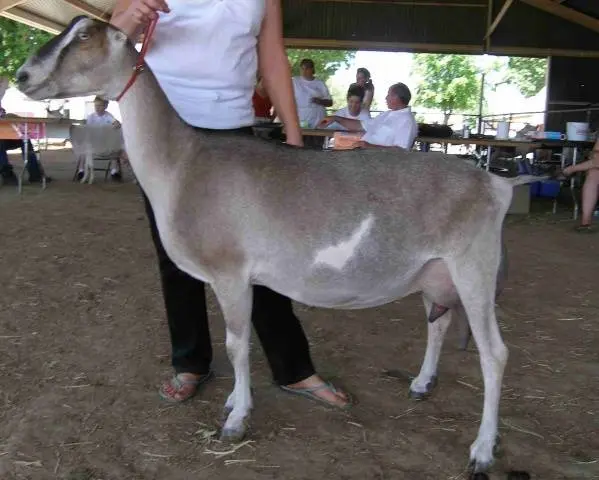
Breed description
The color of this breed can be the most diverse, including uniform and spotted. The muzzle should be straight by standard, but sometimes there is a so-called Roman nose, apparently inherited from her Nubian great-great-relatives.
The La Mancha goat breed is of medium size, goats usually grow at the withers about 71-72 cm, goats – 76 cm. If we talk about body weight, then an adult goat should weigh at least 52 kg, respectively, the mass of a goat should not be less than 64 kg. Animals have a strong constitution, proportional sizes with an elongated muzzle.
The coat is usually quite short, but smooth and soft.
The udder is well developed, usually round in shape and quite voluminous with well-defined teats.
There are both polled animals and those with horns.
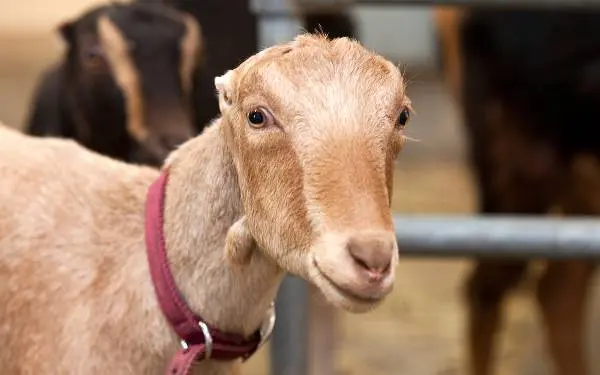
But the most important difference of this breed is, of course, in very peculiar ears. For a person who sees La Mancha goats for the first time in his life, it may seem that they are generally earless. There are actually two varieties:
- The ears of a gopher (or gopher) are very short, up to 2,5 cm long, while cartilage and bends are almost completely absent.
- Elf ears – look like very small ears, up to 4-5 cm long with a small cartilage.
Since if both the mother and the father have elf ears, then the probability of offspring with ordinary ears increases.
Characteristics of the breed: advantages and disadvantages
The original goal of breeding a new breed was to obtain the most promising dairy breed, so that it took all the best features from its predecessors. In part, the goal was achieved. Since the average fat content of milk was increased to 4%, against 3,5% of the main part of the so-called Swiss goats (that is, Alpine, Saanen, Toggenburg and Oberhasli). The level of fat content of Nubian goat milk (4-5%) was just a little short of it, although in terms of taste characteristics it can already approach the characteristic creamy taste of Nubian milk.
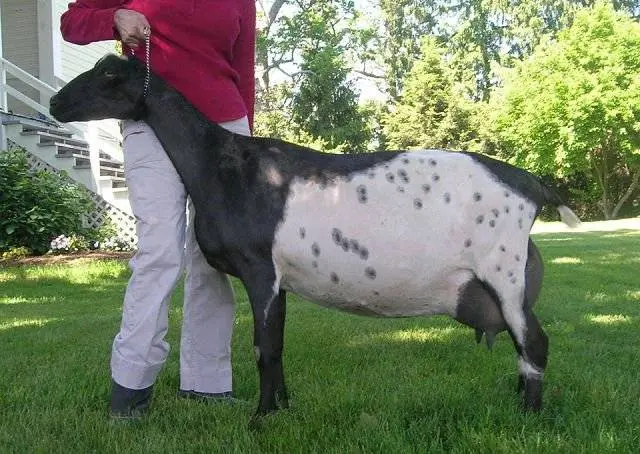
In terms of average milk yield, the Lamancha breed is approximately in the middle between all of the above breeds, ahead of the Nubians and falling short of the Saanen and Alpines. True, it is worth noting that the owners of La Mancha goats talk about the uniformity of milk yield throughout the year, and this is an unambiguously positive sign. Since the peak values of milk yield in themselves mean little, if in the last months of lactation a goat greatly reduces the amount of milk, which is not at all uncommon in many dairy animals. On average, we can say that La Mancha goats give about 4-5 liters of milk per day. Although record holders are also known, capable of producing up to 8 or 9 liters per day in the peak season.
Watch a video of Lamancha goat milking to evaluate the milkiness of this breed:
Thus, the Lamancha breed has many advantages due to which it is very popular all over the world:
- Unpretentiousness and resistance to various conditions of keeping and feeding.
- There is no unpleasant smell, including from goats-producers.
- Good indicators of reproduction of offspring, can bring 3-5 kids annually.
- Milk productivity at average rates is quite stable throughout the year, high-fat milk is ideal for making cheese. (For example: from 30 liters of milk you can get 4,5-5 kg of the most valuable goat cheese).
- Calm and affectionate nature make the content of goats of this breed a real pleasure.
- Some breeders note the variety of possible colors as a plus for this breed – you will never get bored with La Mancha goats.
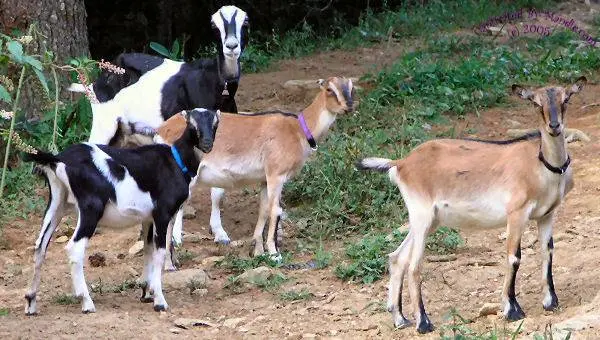
The disadvantages of the Lamancha breed are only its small ears, to which it is difficult to attach an identification tag. Therefore, usually the brand is placed on the area near the tail.
Maintenance and care
Goats of the Lamancha breed are really very unpretentious in maintenance and easily adapt to the conditions that you can provide them. But in order for a goat to please you with its valuable milk for many years, the basic care requirements must be met.
To live in Lamancha goats, an ordinary insulated barn is enough, in which a concrete floor is poured with a slope to drain the liquid. In a common room, it is desirable for each animal to provide its own stall so that it feels its territory, but can constantly “talk” with its neighbors. In the stall, the floor is covered with a sufficient layer of straw for warmth in winter, and wooden plank beds are sure to be arranged, because goats love to lie on a hill and rarely lie on the floor. In addition, they will be much warmer on them in winter.
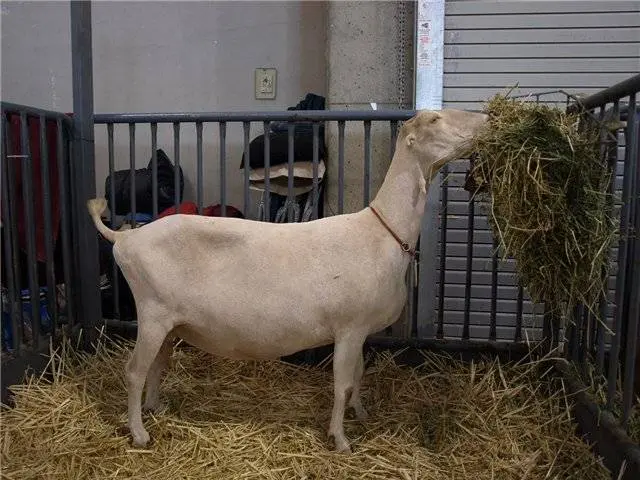
Feeding goats must be regular and complete. In summer, they usually find everything they need on their own, provided they are given enough space to graze. It is only necessary that in hot weather they have access to drinking water around the clock.
Only in this case, the quantity and quality of milk will fully satisfy you.
For the winter period, it is necessary to stock up a sufficient amount of hay, based on an average consumption of about 5 kg per day per individual. Also very useful and tasty for La Mancha dairy goats in winter are a variety of brooms made of trees and shrubs. Willow brooms are considered the most valuable, the eating of which has a beneficial effect on the functioning of the stomach. It is better to harvest them in the summer and dry them under a canopy. The photo below shows how happy goats eat willow.
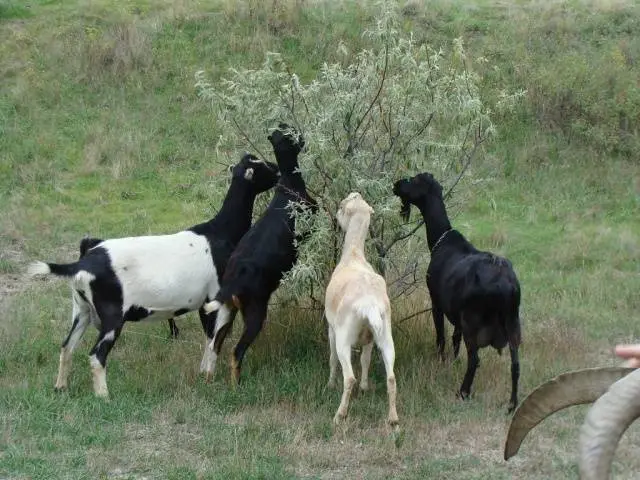
In winter, it is desirable that the temperature in the goat’s rue does not fall below + 5 ° C. And, most importantly, of course, to clean up in time in the room where the animals are kept and change their bedding regularly, since what goats really don’t like is dampness.
If you follow these simple requirements, then the Lamancha goats, distinguished by a very calm, affectionate and unpretentious disposition, will fit well into your backyard life and will delight you with their tasty and healing milk for a long time.









